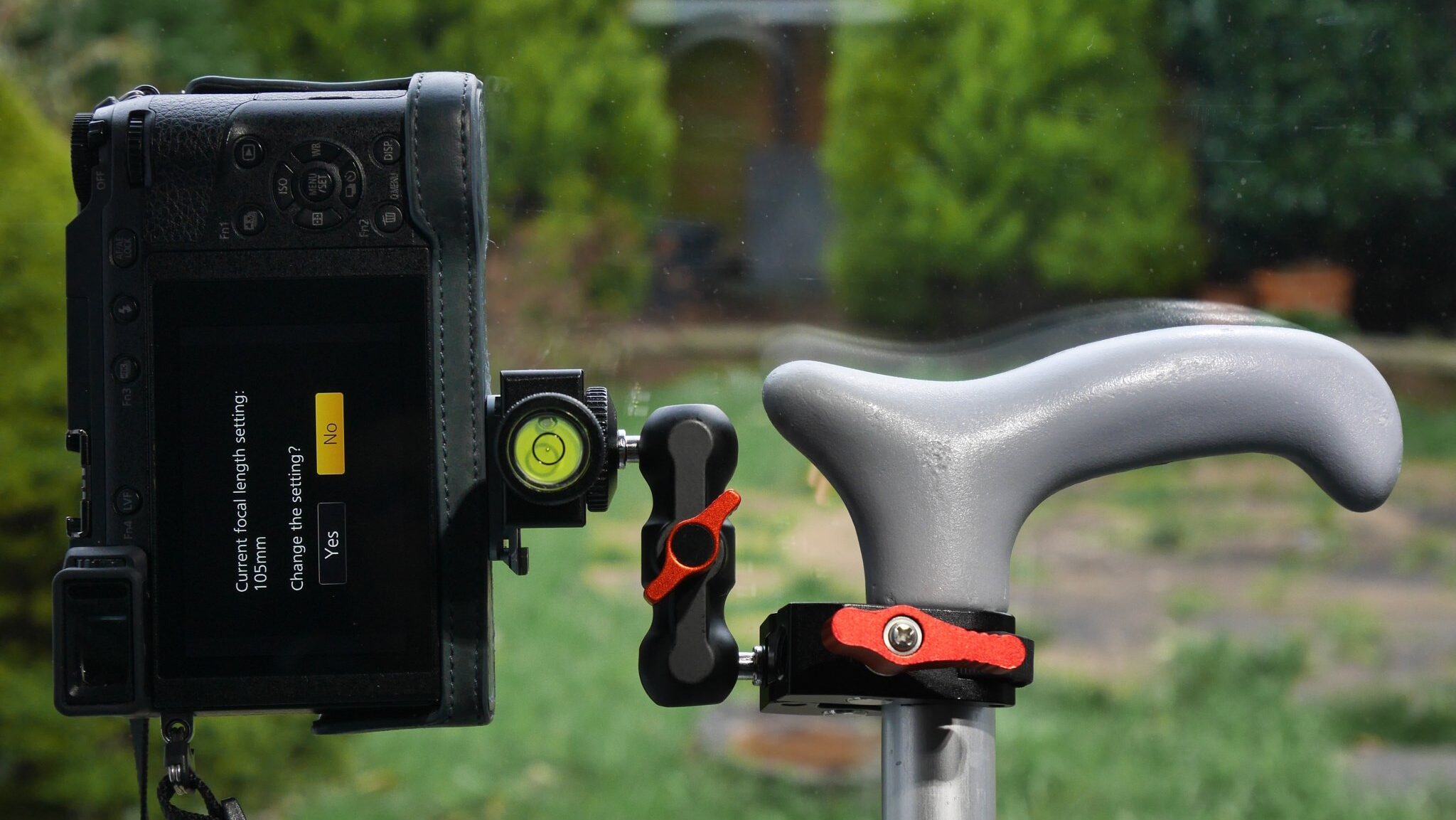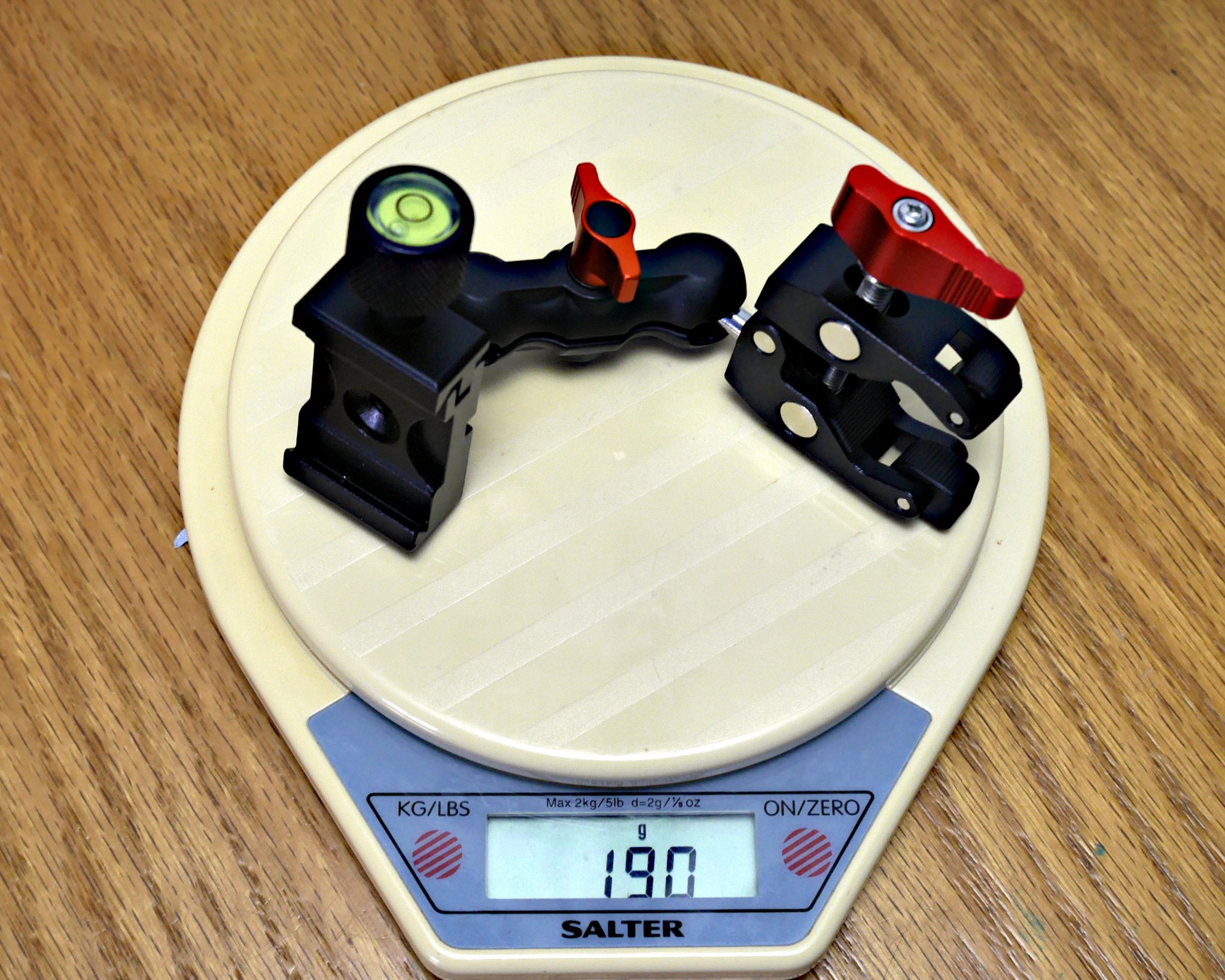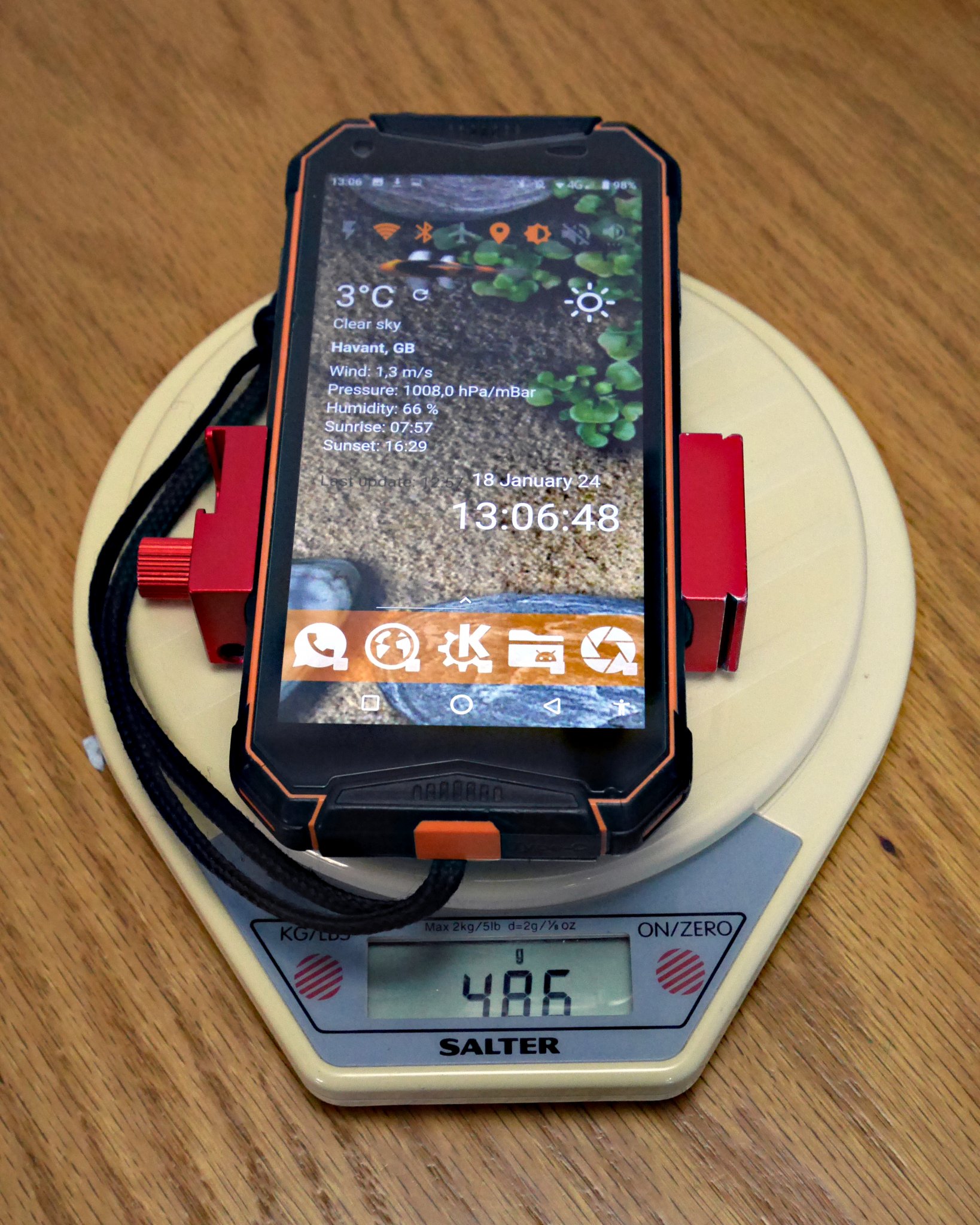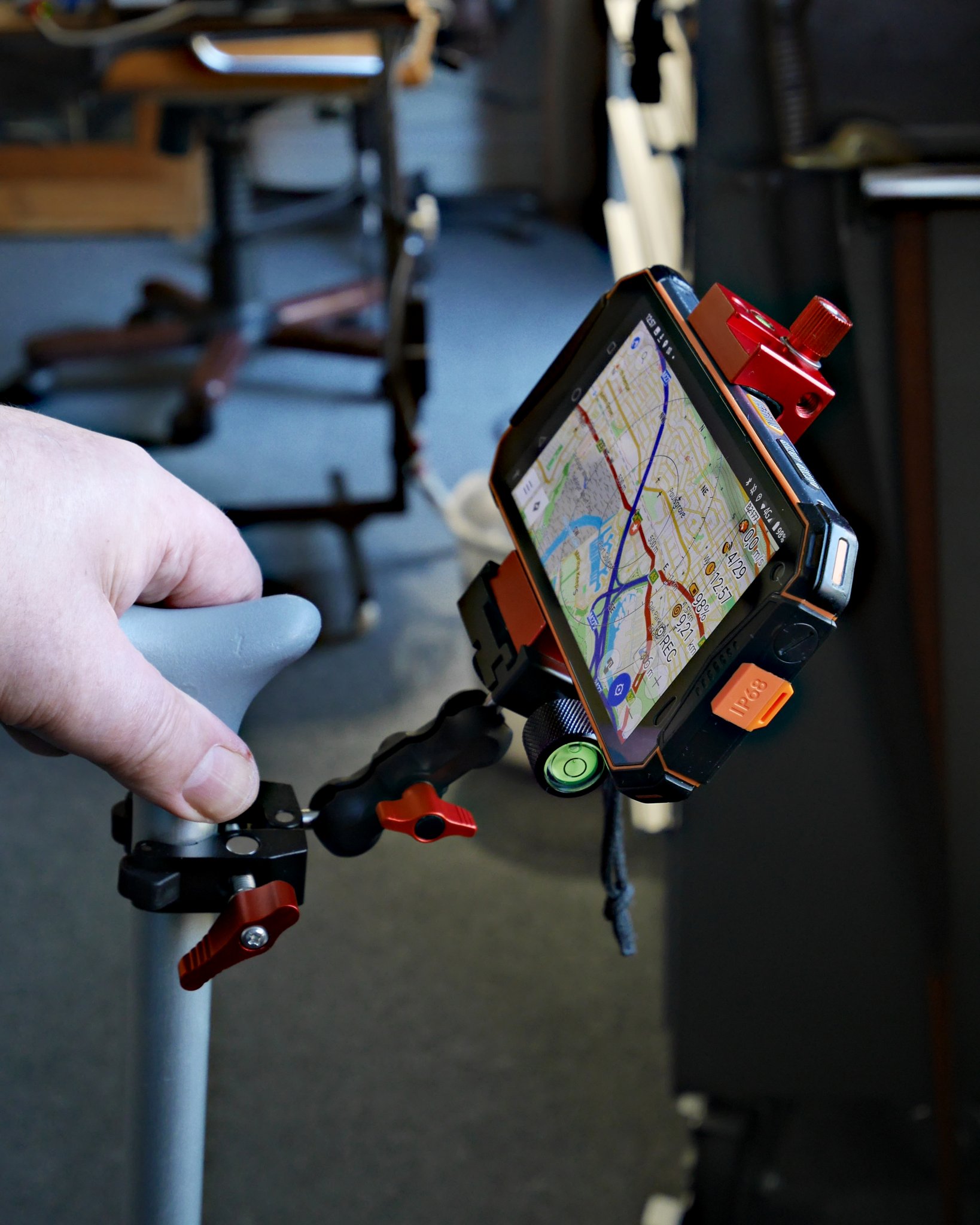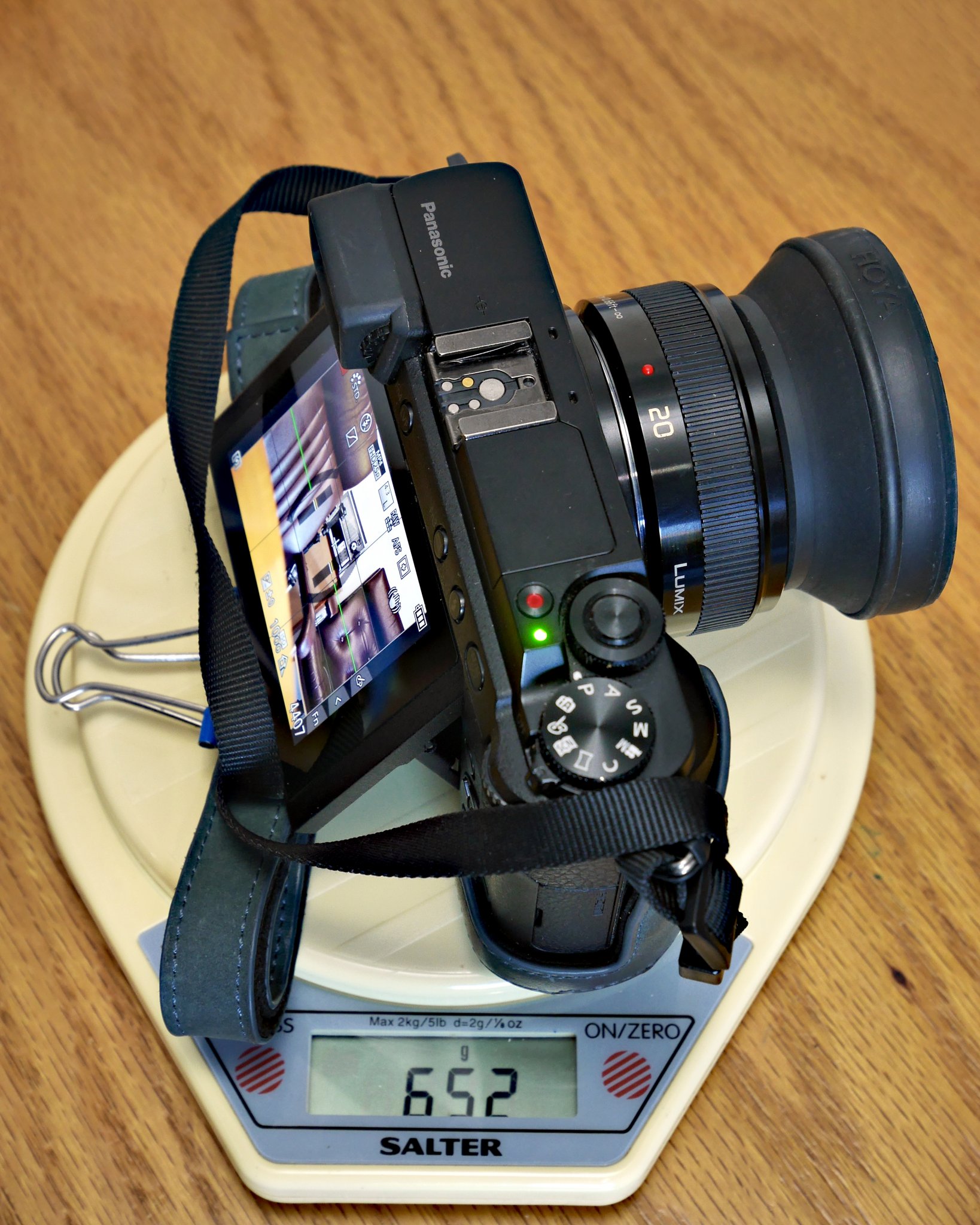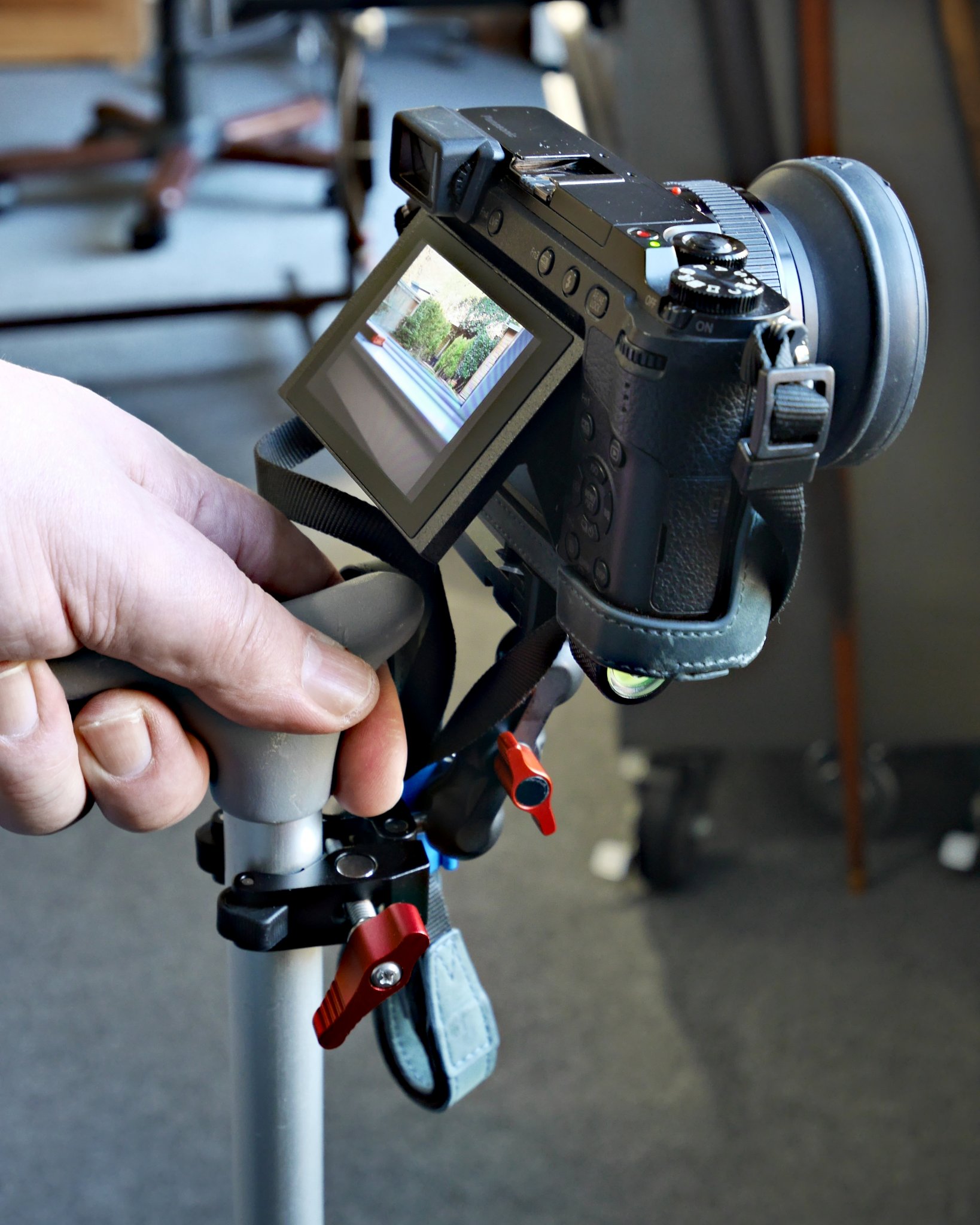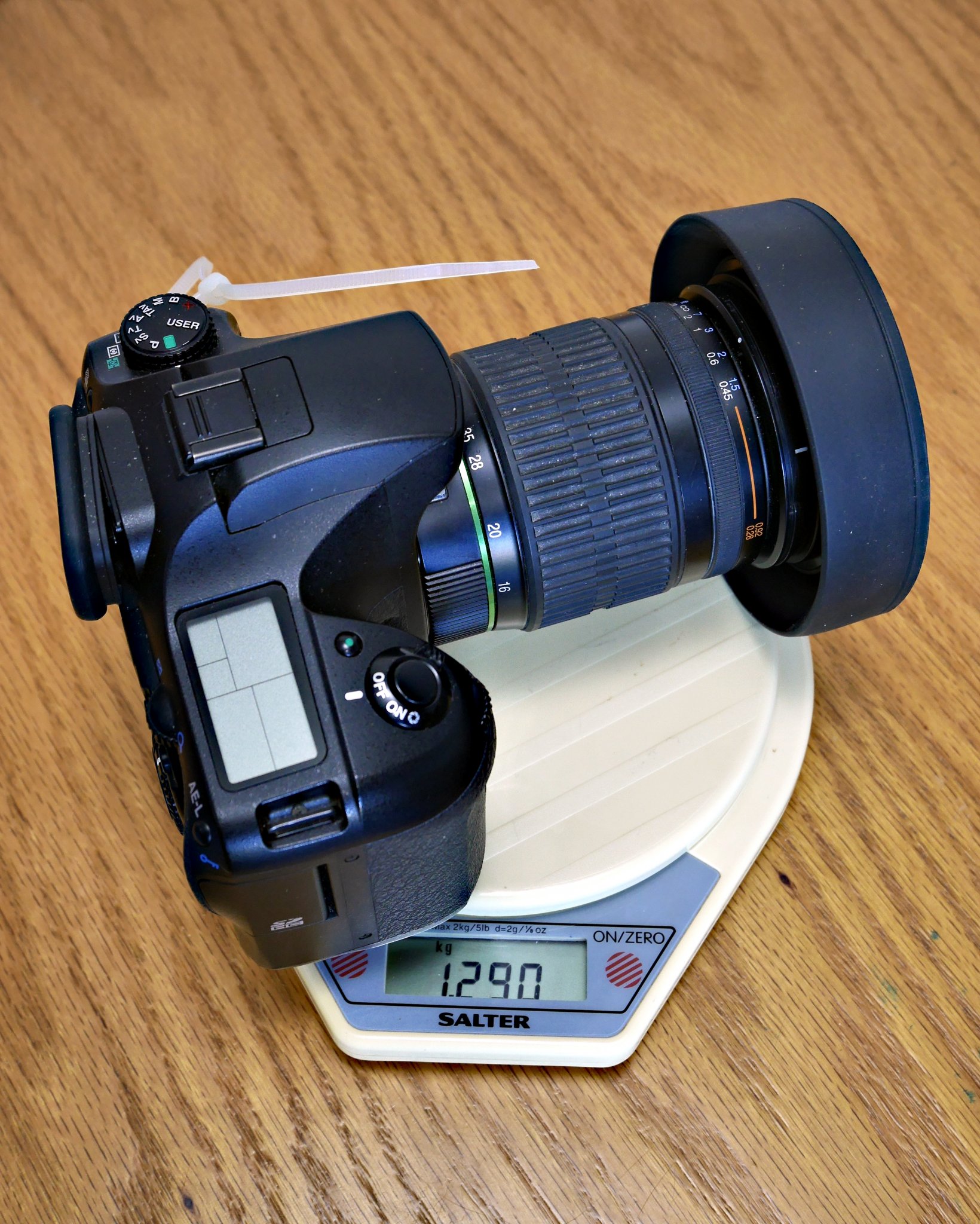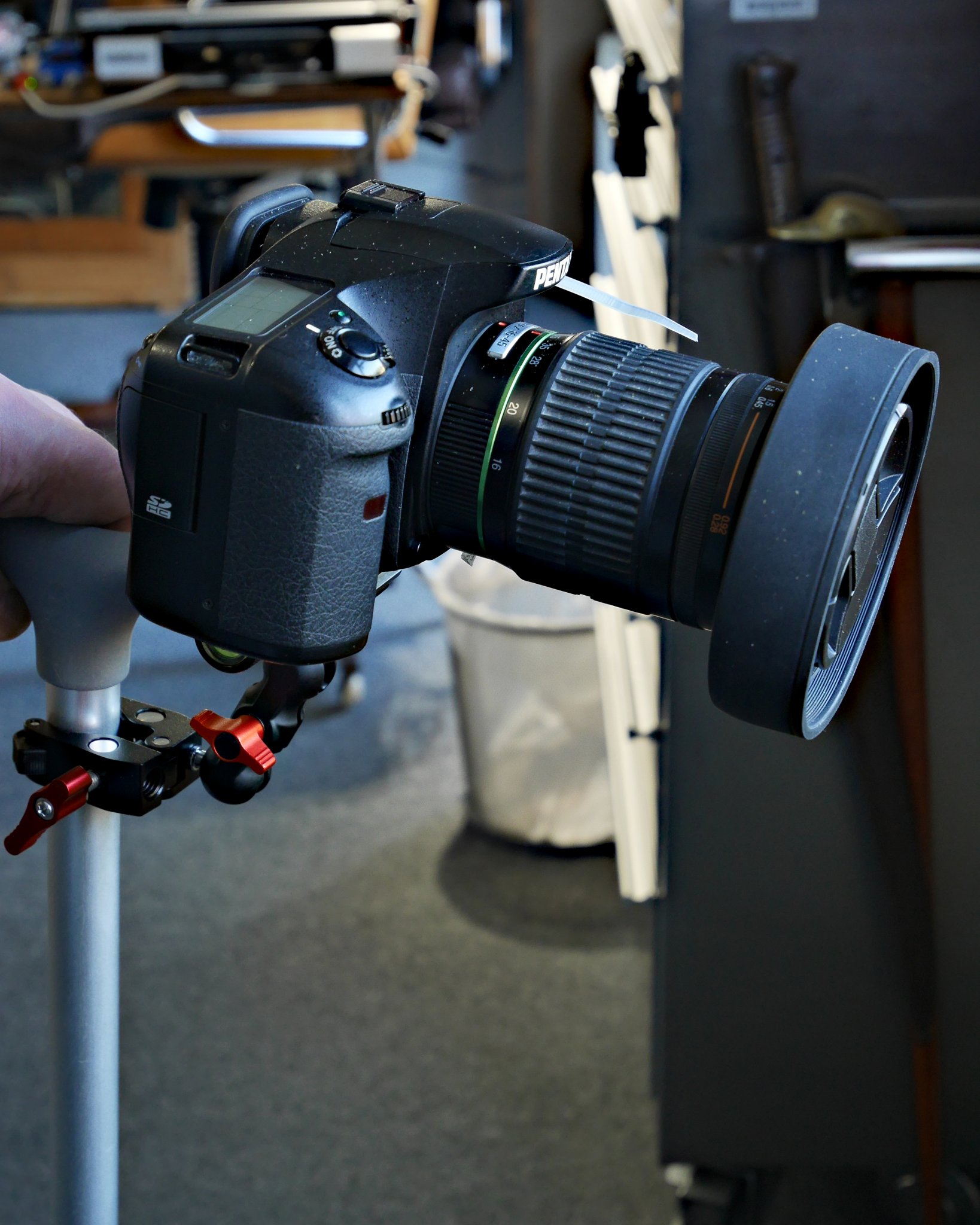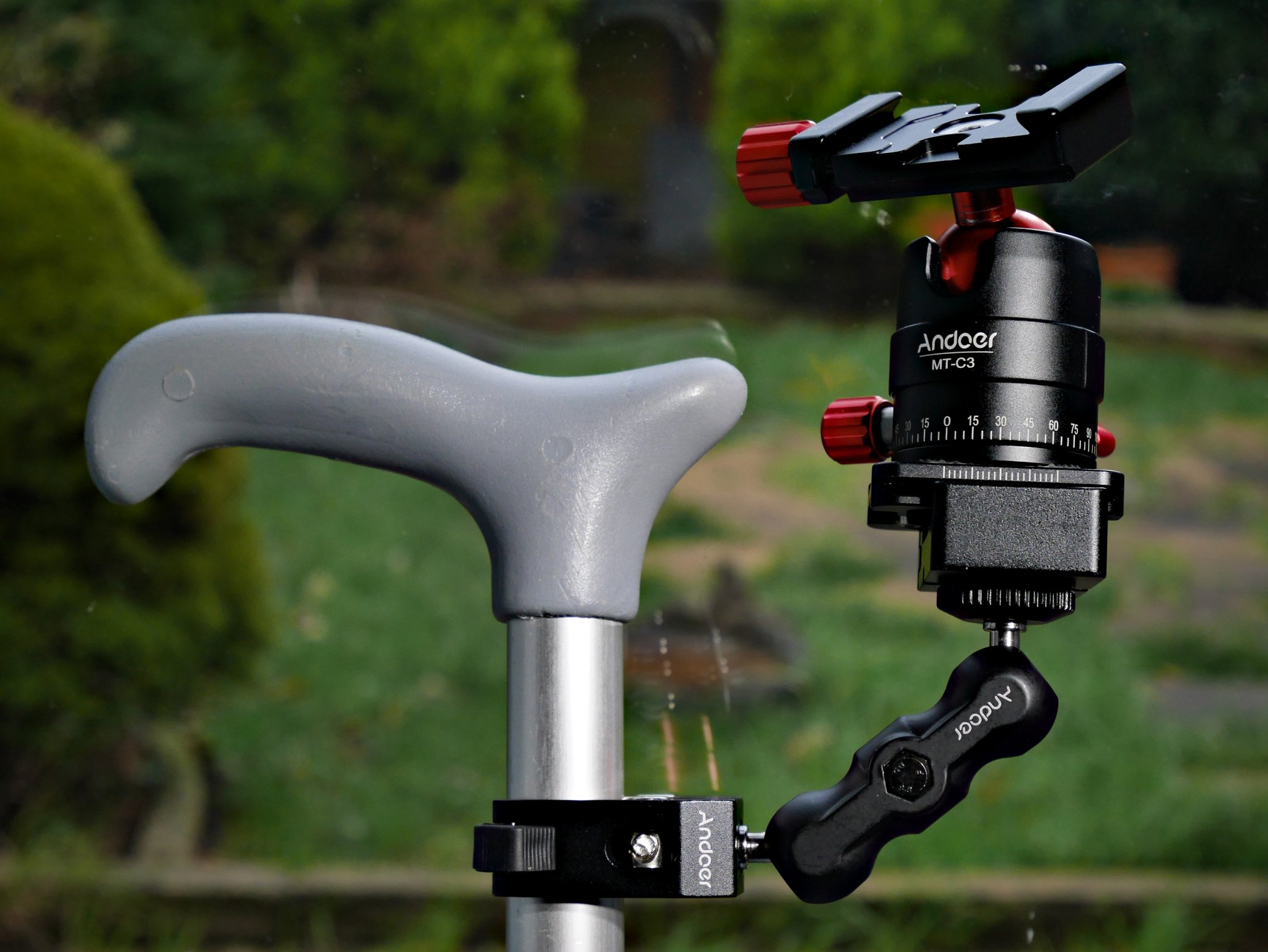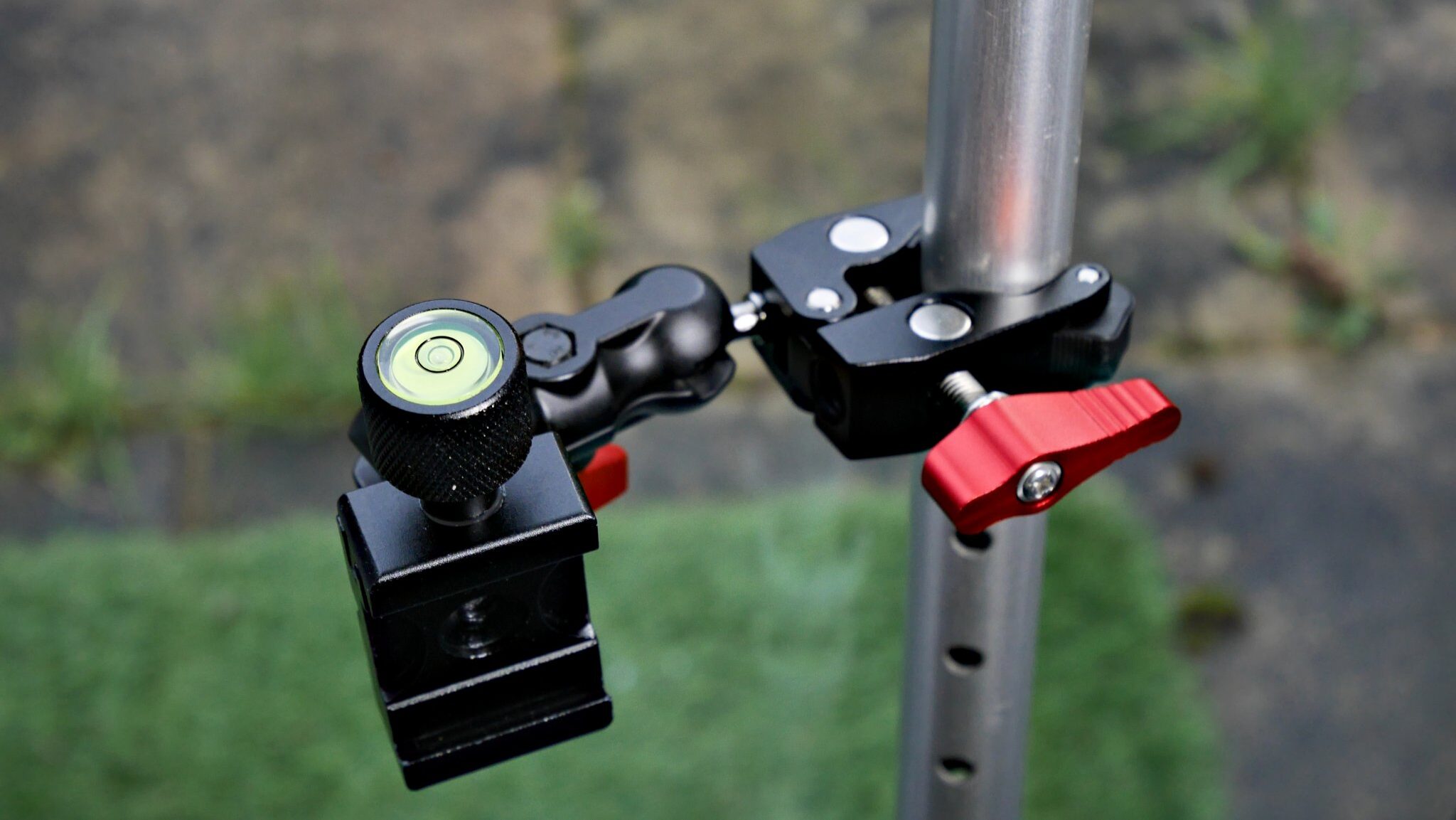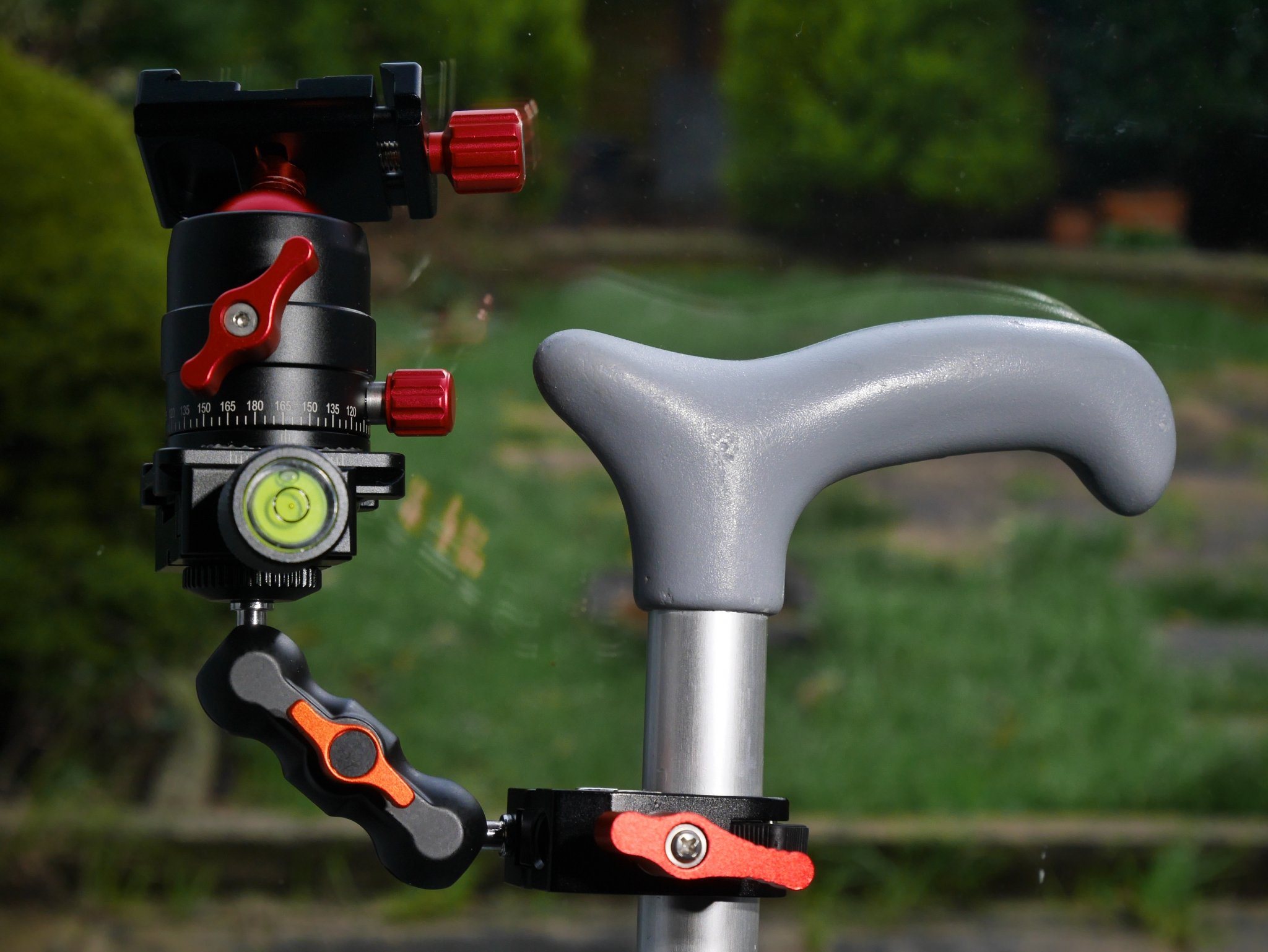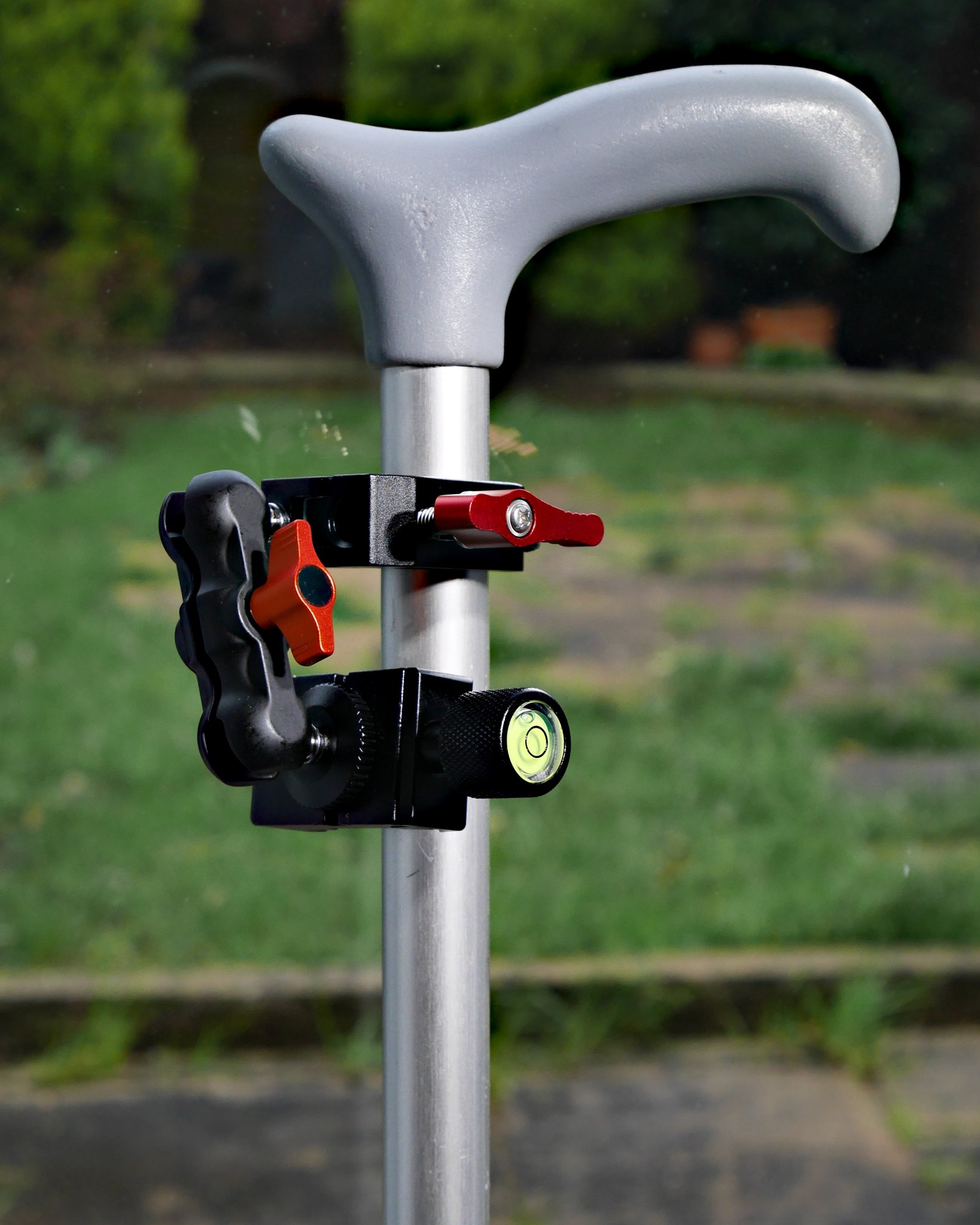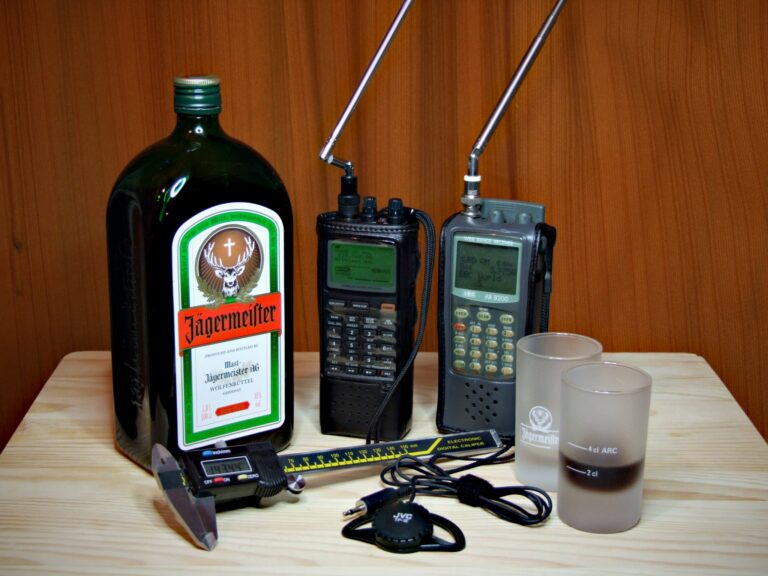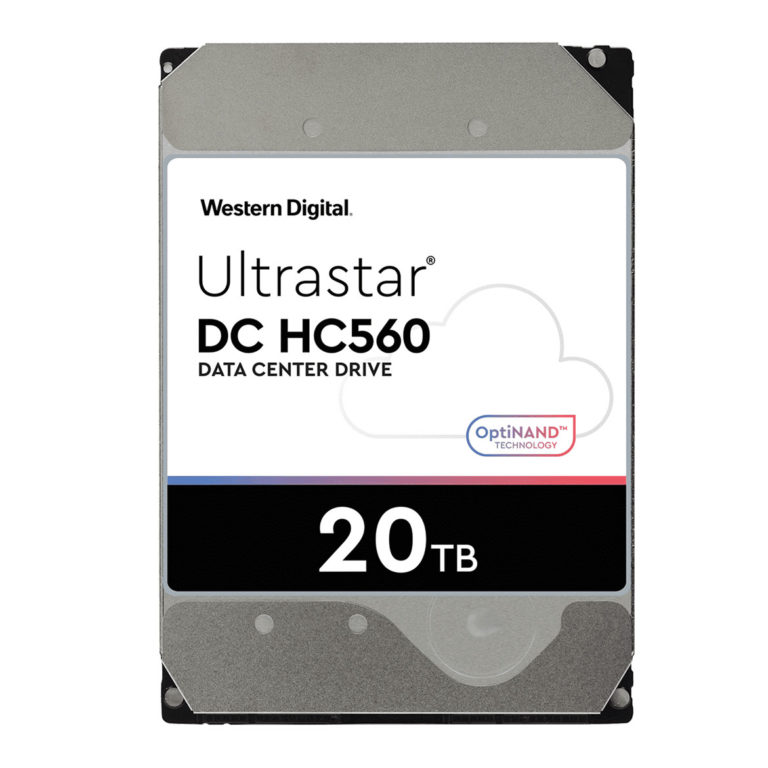Make your own “monostick”
The subject of monopods was raised recently in a photographic forum to which I belong. As it happens, I was already flirting with the idea of using a walking stick as a monopod, to avoid the need to carry two sticks. I’m a lazy so-and-so at the best of times. I also have a habit of leaving things behind. Additionally, I think one might get away with carrying a slightly modified walking stick to some places where a tripod, and probably a normal monopod would not be permitted. So the idea of a dual-purpose monopod-cum-walking-stick or “monostick” actually has a genuine practical value for me, rather than merely appealing to what my wife somewhat uncharitably describes as my “inner six-year-old“.
Unfortunately I suffer osteoarthritis in both ankles. Some days are better than others. But when if flares up, I really need to use a stick. Fortunately I acquired one of those tubular aluminium NHS type things. Whilst it is not exactly a fashionable item, it is nicely engineered, accurately made and absolutely ideal for this sort of experiment.
Photography is quite an intimate and personal subject area. Walking aids are even more so. Therefore when one attempts to combine the two, I think it is quite impossible to create something that suits everyone. I’m 1.88m (6’2″) tall and weigh on the wrong side of 100kg. So the stick part needs to be long, strong and very robust. I’ve used flimsier sticks in the past. For example, I tried those trendy-looking “hiking-stick” things. But I needed a rubber strap wrench to tighten them sufficiently so they didn’t collapse. Eventually I stripped the internal threads and the bloody things collapsed anyway!
The only sticks that last for me, and increasingly important, are safe, are either the aluminium NHS type, such as the Hungarian one I was given by my late father-in-law, or the big old heavy wooden kind such as the one I inherited from my grandfather.
What you need for your “monostick“
Firstly you need a walking stick, hiking stick, walking frame or some other walking aid with a tubular structure. I.e. something 13-30mm in diameter upon which you can mount a metal clamp. A bog-standard walking stick will do. But for my experiment I used my adjustable, tubular-aluminium NHS type.
Then you need…
[Please click on images to enlarge]
- An adjustable metal clamp.
- A small adjustable arm that connects to the clamp.
- A small Arca-compatible quick-release clamp that connects to the adjustable arm.
- If you want to use it with a smartphone then you will also need some sort of Arca-compatible smartphone bracket.
In this instance, the clamp and the adjustable arm are available as a single package. However the small Arca-compatible quick-release clamp and the smartphone bracket had to be purchased separately. The photo below shows the clamp, adjustable arm and the Arca quick-release clamp after assembly, total mass less than 200 grams – or less than four Mar Bars in “old money“…
Then you simply clamp it somewhere near the handle end of your stick, fit your camera in the Arca-compatible clamp, and adjust as necessary…
Now you’re ready to go shooting.
Testing with various camera types and configurations
I think this idea could be useful for anyone – or at least useful to anyone who uses some form of walking aid. To make it appeal to a wider audience (hopefully) I thought it would also be useful to test the idea with three very different types of camera, in order to see how well it performs.
1. “Monostick” with a Ulefone Armor 3w smartphone (an unusually chunky ruggedised jobbie).
Mass, including aluminium Arca-compatible bracket, just under 500 grams. A normal skinny smartphone c/w a plastic holder would probably be around half of that…
I found this very easy to use. I could use it one handed – either handed, because my index finger could easily reach the touchscreen. In fact, used in “smartphone mode” I can enjoy all sorts of other smartphone features from my walking stick too. I’d describe this as “very usable indeed”. And under many circumstances, especially if you are basically just “shuffling around”, seems there’s no need to remove the phone from the stick – other than perhaps to make phone calls or reduce the risk of malevolent passers-by snatching one’s phone! 🙂
2. “Monostick” and a modern(ish) MILC – Lumix DMC-GX80
Mirrorless interchangeable lens camera, with 20mm prime lens. Includes Arca-compatible plate on base of camera, battery, lens hood and a little bulldog clip I use to keep the strap out of the way. Mass about 650 grams.
This was almost (but not quite) as easy to use as the smartphone. The tilting touch screen (which not all MILCs have) meant I could control the camera almost as easily as I could the smartphone, one-handed. Obviously I needed to use the other hand to manually focus the lens using the lens ring. And the camera touchscreen is not as easy to use as the smartphone’s – though more modern MILCs are likely rather better than my 7-year old GX80. 😉
Overall I’d describe this as “fairly usable”. For short shuffly walks I’d probably leave the camera on the “monostick“. But anything further than 10-20 metres or so I would remove the camera and carry it separately. Fortunately, my interpretation of this idea also includes and Arca-compatible quick-release clamp. Consequently, fitting and removing the camera onto the stick is literally a five-second task.
3. “Monostick” and a heavy old Pentax K20D DSLR
Or any heavy old-school DSLR, probably. Includes Arca-compatible plate on base of camera, battery, 16mm-45mm Pentax AF lens and lens hood. Mass just under 1300 grams – twice that of the aforementioned MILC…
Now this was something of a “hair shirt” compared to the first two applications. After all, 1.3kg is actually quite a lump to place on any monopod. In fact this weight was also one of the main reasons I went mirrorless, back in 2014. But I digress…
Whilst this “monostick” not impossible to use with a heavy camera, there are a number of annoyments.
- It was quite difficult to tighten the adjustable arm sufficiently to stop it drooping under the weight of the camera.
- Using it really is a two-handed job. One to operate the camera and the other to steady the whole kit-and-caboodle. Well, with practice one might get it down to a single hand. But I couldn’t manage it. Though to be fair, I’ve not used a DSLR in earnest for almost a decade.
- The assembly was top-heavy and certainly could not be used as a walking-stick while carrying the camera. You definitely need to carry the camera separately and attach it to the “monostick” only when you need it.
In any event, if you decide to use a heavy camera on your “monostick“, then you’ll definitely be grateful for the Arca-compatible quick-release clamp.
What about a ball-head?
In the aforementioned forum discussion, someone observed that my “monostick” lacked a ball-head. My counterargument to this is that the arm is a sort of double-ended ball-head – albeit with somewhat smaller balls. 🙂 i.e. 12mm diameter as opposed to the more common 25mm – 30mm used in many Chinese-made ball heads.
However, those who feel they must have a conventional ball head too, then simply add one…
Personally I wouldn’t bother because the arm itself already does what a ball head would do. In fact using just the arm and its ball-ends, one can place the camera with quite remarkable precision if one has a mind to do so, “On the bubble“, as they say in the building trade…
Certainly for my humble needs, the arm with its 12mm ball-ends seems perfectly adequate…
Besides an additional ball-head adds significantly to the mass, not to mention, doubling the cost.
Other observations
Overall, despite the aforementioned shortcomings, I felt this worked out pretty well. So I was curious to see if it would work on other types of stick. I have my grandfathers old wooden stick. This is around 27-28mm in diameter and its surface is somewhat irregular. Nevertheless, the aforementioned clamp worked perfectly. Ditto on an old brass-handled stick we use mostly as a prop. In fact this get up enables you to mount a camera, or any Arca-compatible device, on any tubing. That could be a light stand, a swinging boom or anything with a circular profile 13mm to 30mm in diameter. Larger clamps are available too.
With regard to the Arca-compatible QR clamp, a friend bought the same model Arca QR clamp and had issues with it. Now I’m unsure whether he was unlucky or if I’ve been lucky: mine works perfectly and seems compatible with all my other Arca stuff. And because this Arca clamp is only 30mm wide, it blends in nicely with the other components in this get-up, including the optional ball-head. Your mileage my vary, of course.
I’d also add that with the use of a timed shutter or suitable remote control, a “monostick” doubles as a fairly tough and reliable selfie-stick too. Which neatly leads me on to highlighting the versatility of the “monostick“. I can use any stick that suits me. Moreover, I can mount the camera at any point on the stick thus enabling its use as a selfie stick or to reach into recesses and voids that I cannot reach by myself. The modification is 100% reversible. and its component parts can be redeployed elsewhere if it turns out that I don’t like my “monostick” after all. 😉
Also another important feature for me was that the adaptation should fold away neatly when not in use, safely and unobtrusively. Which I think it does. Well, OK it does look a bit prototypical. But I rather like that look – probably because I had Meccano as a kid…
For a miserly old skinflint such as yours truly, another major attraction for this idea is that the adaptation is dirt cheap. The bracket, extension arm and Arca-compatible clamp came to less than fifteen quid, including VAT and delivery. The Arca-compatible smartphone bracket added another £4.00.
Finally, if you do fit a clamp on a walking stick, please be sure to place the clamp where you won’t catch your hand on it. You will notice in the photos where I was actually holding the stick handle, I fitted the clamp about 15mm below the base of the handle, to allow sufficient clearance for my fingers! Failure to do so could be painful!
Parts availability
- Andoer Multi-function Ball Head Clamp Ball Mount Clamp Arm Super Clamp with 1/4″-20 Thread
https://www.aliexpress.com/item/1005006385609461.html - Arca Compatible Quick Release QR Plate Clamp Adapter Mount for Camera Tripod
https://www.aliexpress.com/item/1005005832598844.html - Arca Compatible Smartphone Holder Stand Bracket
https://www.aliexpress.com/item/1005002638282646.html
Whilst these are the parts I chose, there are many alternatives available, from many other suppliers, that might or might not suit you better. If you decide to buy the parts directly from China, remember that prices exclude VAT. Also, unless the supplier has an arrangement with HMRC, such as the one AliExpress has for its sellers, then you may get clobbered for other duties too. Prices may also be subject to currency fluctuations.

